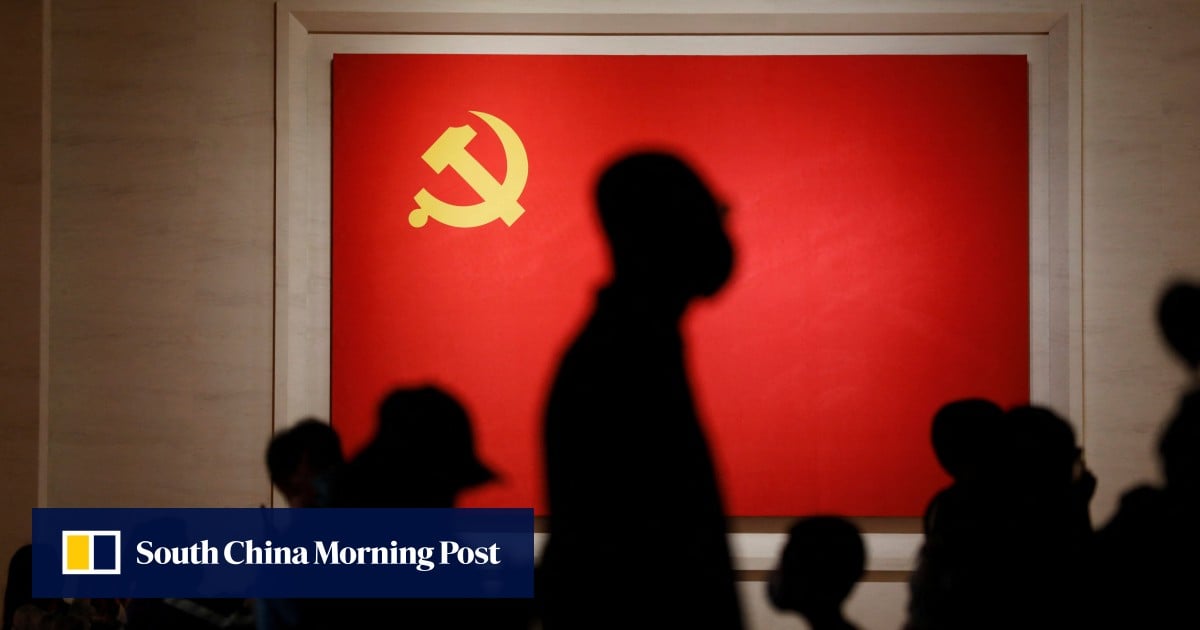Authors Ji Yeon Hong, associate professor of political science at the University of Michigan, and Leo Yang, a postdoctoral fellow at the Stanford Center on China’s Economy and Institutions, built a complex model to carry out their comparative analysis.
The model showed that key provincial officials with ties to more influential central leaders – specifically members of the Politburo Standing Committee – were more likely to promote news coverage of corruption probes against peers from other provinces as part of factional rivalry.
‘Voice of China’ echoes Xi’s call to double down against corruption
‘Voice of China’ echoes Xi’s call to double down against corruption
The researchers also used the frequency of state media reports on the committee members as a measure of their prominence.
Two approaches were used to demarcate the factions in Chinese politics during the period under study.
In the first, the authors considered each Politburo Standing Committee member to be a sponsor of a faction.
For the second, they grouped these power players into three high-profile factions once thought to be active.
What sidelined China’s once powerful Communist Youth League?
What sidelined China’s once powerful Communist Youth League?
The authors avoided identifying who made up these factions, but said in their paper that the two methods yielded similar results.
They also searched millions of reports from more than 100 local media outlets using the keyword shuanggui, or intraparty disciplinary probes, and analysed the career paths of party secretaries in provinces where the proven corrupt officials were based.
Under shuanggui, which falls outside the criminal justice system, the party’s disciplinary inspectors have broad powers to detain and interrogate suspects. The much-criticised system of secret inquisitions was legalised in the national supervision law of 2018.
The rationale for making this a key indicator was based on the assumption that regional media, which is strictly censored, is regulated by local propaganda departments. These departments ultimately report to local party secretaries, and so regional media lack the incentive to criticise local officials.
“Criticising other local governments does not interfere with the political fortunes of their own supervisor, and may actually contribute to the supervisor’s success by disparaging local leaders who are in competition with the supervisor,” the paper argues.
Hong and Yang explained that publicly reported corruption cases had significantly disrupted the promotion prospects of the No 1 official in the provinces concerned. They also found that provincial leaders associated with more powerful Politburo Standing Committee members were more likely to promote this kind of coverage and had greater chances of promotion.
However, their study would not be able to provide an accurate analysis of today’s party politics, the authors said, as the data analysed ends at 2014 – just two years into Xi Jinping’s leadership of the party as general secretary.
In a written statement to the Post, Hong and Yang said: “Our paper is written for an academic purpose and the evidence is limited to local newspaper coverage, mostly before the current leadership. This makes it inaccurate and inappropriate for us to draw a broad implication to the current politics in China, especially at the top level.”
Their research focused mainly on the period when Hu was in power. Hu, party secretary from 2002 to 2012, stepped down as China’s president in 2013, when his mandated second and final five-year term ended.
As the authors describe in their paper, those years are “not typically framed as a period in which one faction or one top leader dominated others”.
During Hu’s time, Beijing hailed the power structure of the party as one of “collective leadership”, a term that soon fell out of favour after Xi succeeded Hu as party leader in 2012 and initiated an increasing centralisation of power.
Xi has also repeatedly called out factions within the party, with many fallen senior officials netted in the anti-corruption campaign he launched in late 2012 accused of forming their own intraparty “political cliques”.







